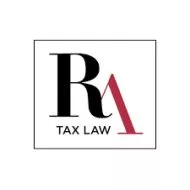Enhancements to the Vaping Product Taxation Framework in Canada
The rapid rise of vaping products in Canada has instigated discussions surrounding their taxation. Recognizing the need for a framework that addresses the unique nature of these products, the Canadian government has introduced an excise duty on vaping products.
The Birth of the New Excise Duty Framework
In Budget 2022, the Canadian government announced the
implementation of an excise duty on vaping products, which took
effect on October 1, 2022. This duty applies to vaping substances
manufactured within Canada or imported for use in vaping devices in
the country
Implications for the Consumer and Seller
As noted above, the Budget 2022 contained refinements to the original taxation framework. A federal excise duty has been applied to the sale and distribution of vaping products. Please refer to the chart below for ease of reference:
| Vaping Liquids | $1 per 2 millilitres (mL), or fraction thereof, for the first 10 mL of vaping substance in the vaping device or immediate container |
| $1 per 10 mL, or fraction thereof, for amounts over the first 10 mL | |
| Vaping Solids | $1 per 2 grams (g), or fraction thereof, for the first 10 g of vaping substance in the vaping device or immediate container |
| $1 per 10 g, or fraction thereof, for amounts over the first 10 g |
It's important to understand that for every vaping product
packaged in Canada meant for the duty-paid market, the licensee who
packaged it must compute the vaping duty to ascertain the amount
due to the CRA on their monthly return.
For vaping items imported into Canada for the duty-paid market, the individual responsible for the duty under the Customs Act should compute the vaping duty to find out the amount due to the Canada Border Services Agency (CBSA) upon import.
Key Provisions of the New Framework
- Licensing and Registration: Manufacturers of
vaping products are now required to obtain a vaping product license
from the Canada Revenue Agency (CRA). Additionally, importers need
to apply for registration with the CRA
. - Vaping Stamping Regime: A new stamping regime
has been introduced. All vaping products entering the Canadian
duty-paid market must be packaged with an excise stamp affixed,
indicating that the relevant duties have been
paid
. - Regulatory Basis: The information pertaining to these new measures and regulations is rooted in the Excise Act, 2001, and its associated regulations. This includes the amendments introduced under Bill C-19, the Budget Implementation Act, 2022.
Reporting and Records
Every licensee of vaping products needs to declare and pay the vaping duty according to the Excise Tax Act. If the vaping products are produced in Canada, the licensee should declare and submit the owed vaping duty using Form B600, Vaping Duty and Information Return. This form, along with any associated duty payment for a specific month (referred to as the reporting period), should be submitted by the end of the month after the reporting period.
Ensure you maintain all records validating the details on your Form B600. This encompasses quantities of vaping products produced, obtained, utilized, packaged, modified, sold, and discarded. It's crucial to have evidence for the vaping duty you've declared as owed. Maintain these records for a minimum of 6 years from the conclusion of the relevant year.
Looking Ahead
As the vaping industry continues to evolve in Canada and globally, it's essential to keep a close watch on how taxation frameworks adapt. With 2024 coming up, and minimal changes in 2023 to the current taxation changes to vape products, one can only expect more changes in the near future.
The content of this article is intended to provide a general guide to the subject matter. Specialist advice should be sought about your specific circumstances.


